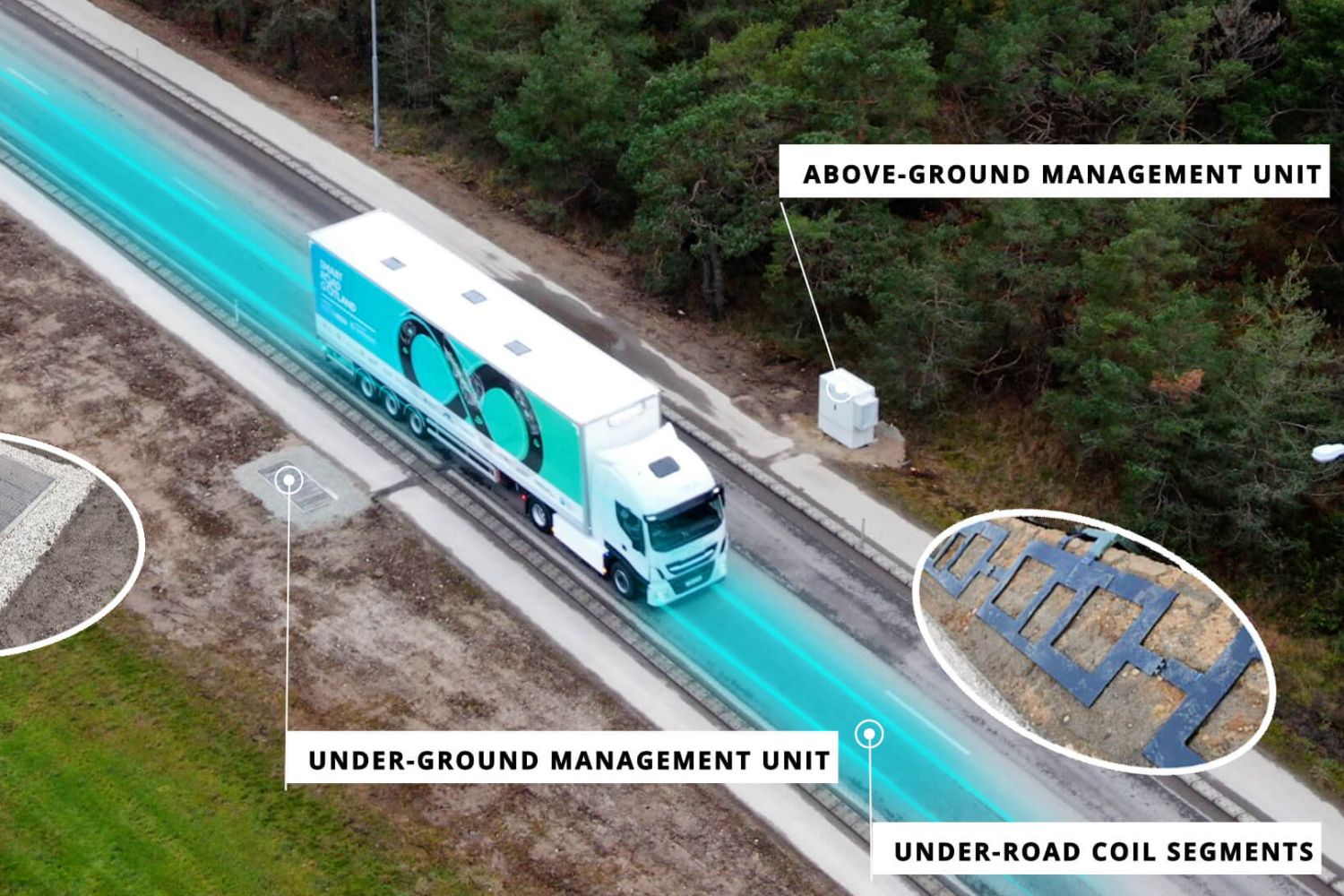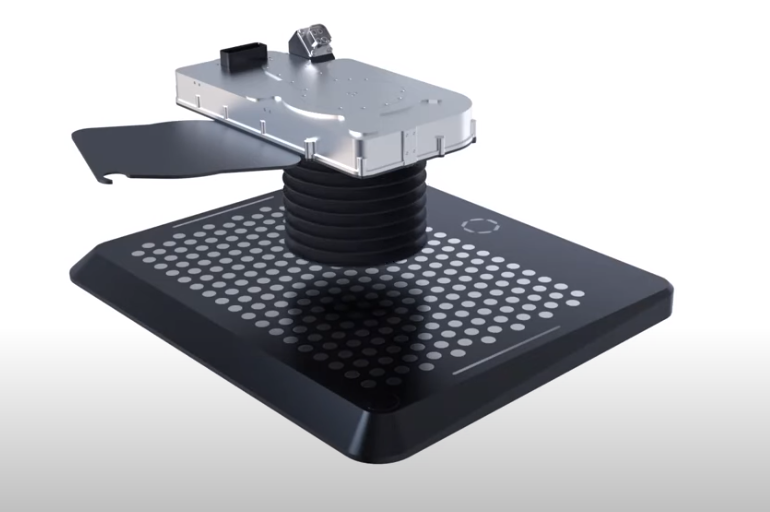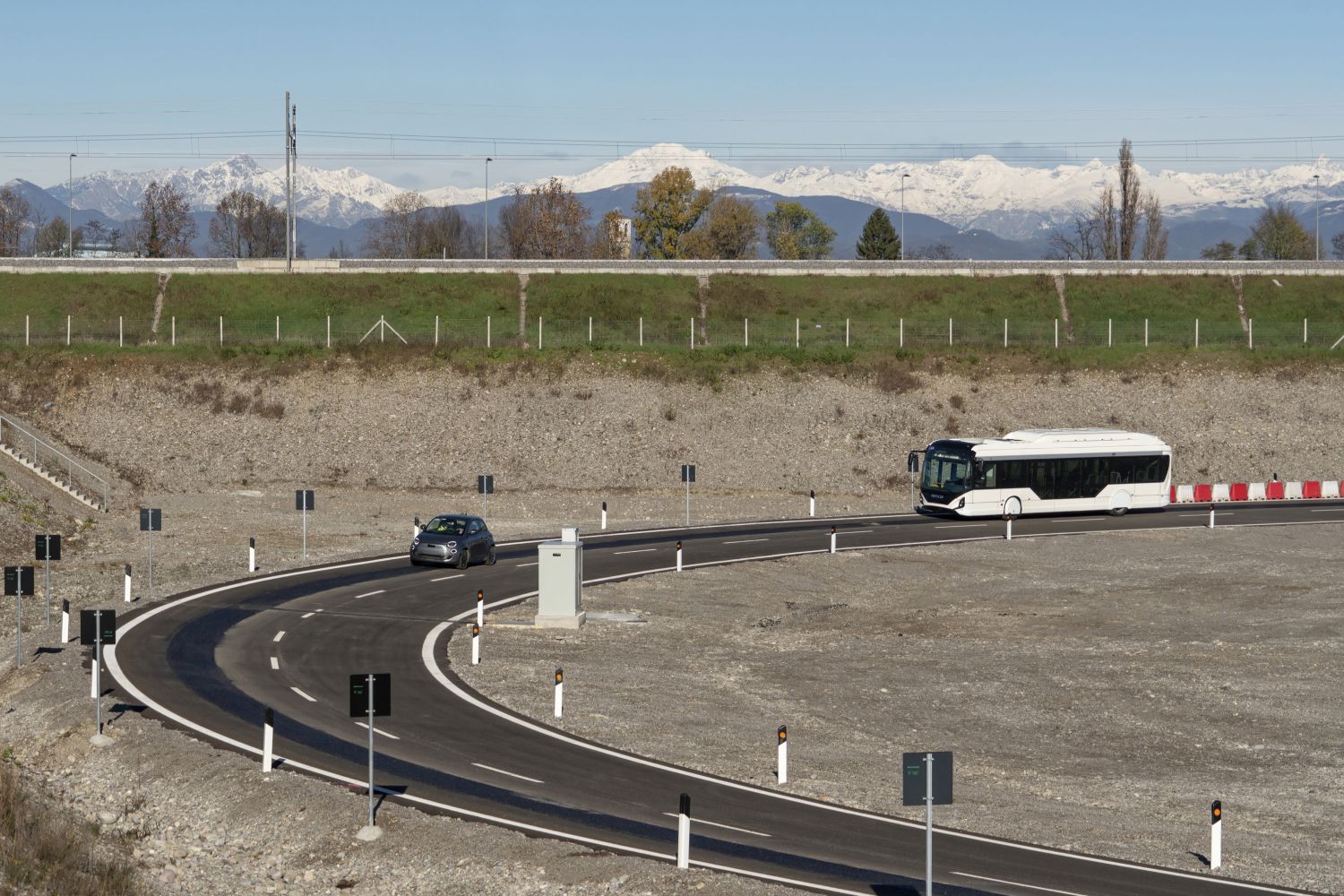Charging Systems: Drawing Power without Cables
Author: Achim Geiger
Enough with tangled cables at wallboxes and charging stations! Science and industry are working hard on new solutions for e-mobility infrastructure.
Electromobility will not have reached the finish line until the charging infrastructure is as readily available as gas stations are for combustion engines. How about getting an extra dose of range just by parking your car at the supermarket, doctor’s office, or cab stand? Or what about a highly automated car that drives itself into the parking garage and comes out fully charged? Or a driverless shuttle bus that draws its power from the road surface? Such scenarios could become reality in the future. Science and industry are already working on alternatives to charging stations.
Their focus lies on automated technologies that independently establish a connection between the electrical grid and the vehicle. Inductive charging systems, which manage entirely without a physical connection to the vehicle, are promising. “In this scenario, charging takes place wirelessly via electromagnetic fields,” explains Andreas Richter, engineer at DEKRA’s Electromobility Competence Center. The infrastructure required essentially consists of charging plates with primary coils that are installed in the ground and supplied with power. The counterpart is the secondary coil installed underneath a vehicle. If the vehicle is thus situated above the primary coil, the electromagnetic field activates the secondary coil to generate an induction current for the electric motor or battery.
Has the cable-plug method reached the end of the line?
Does that mean that the common cable-plug method for charging stations and wallboxes is past its prime? Not necessarily. In fact, the possible variations of this so-called conductive charging are extensive. In early 2020, Volkswagen, for example, presented a fully automated charging robot that carries out the entire charging process on parked electric cars, with battery wagons in tow. Although the Wolfsburg company has since gone quiet on this project, a similar system is poised for series production.
TU Graz has developed a mobile charging robot that moves autonomously at up to 20 kilometers per hour with the help of lidar sensors. The system consists of the mobile platform on which a robot arm is installed, which autonomously connects the charging plug to the electric vehicle and removes it after charging. A cable powers the system. Charging is done with direct current and a charging power of up to 50 kilowatts (kW).
New variants of conductive charging
Graz-based start-up Volterio and vehicle supplier Continental provide a completely different interpretation of an automatic charging robot. This variant of conductive charging is an underfloor system in which a charging plate, fixed to or embedded in the floor with an integrated connection to the power grid, connects to the interface installed in the vehicle floor via a special tool. As soon as the electric car is positioned above the charging plate, the components communicate with each other via ultra-broadband. A cover flap on the floor unit automatically retracts to make way for the integrated charging arm, which connects upward to the vehicle. Interestingly, the system does not require accurate positioning – the charging arm reportedly allows deviations of up to 30 centimeters from the ideal parking position.
Austrian start-up Easelink takes the opposite approach to connecting charging plate and electric car – here, the connector is integrated into the vehicle floor. A charging nozzle lowers onto the charging plate as soon as the vehicle is in position. The pad is designed so that the connector can safely establish contact at several points. This so-called matrix charging system is designed to enable high power transfer. Both Easelink and Volterio claim their equipment can be retrofitted to most vehicles.
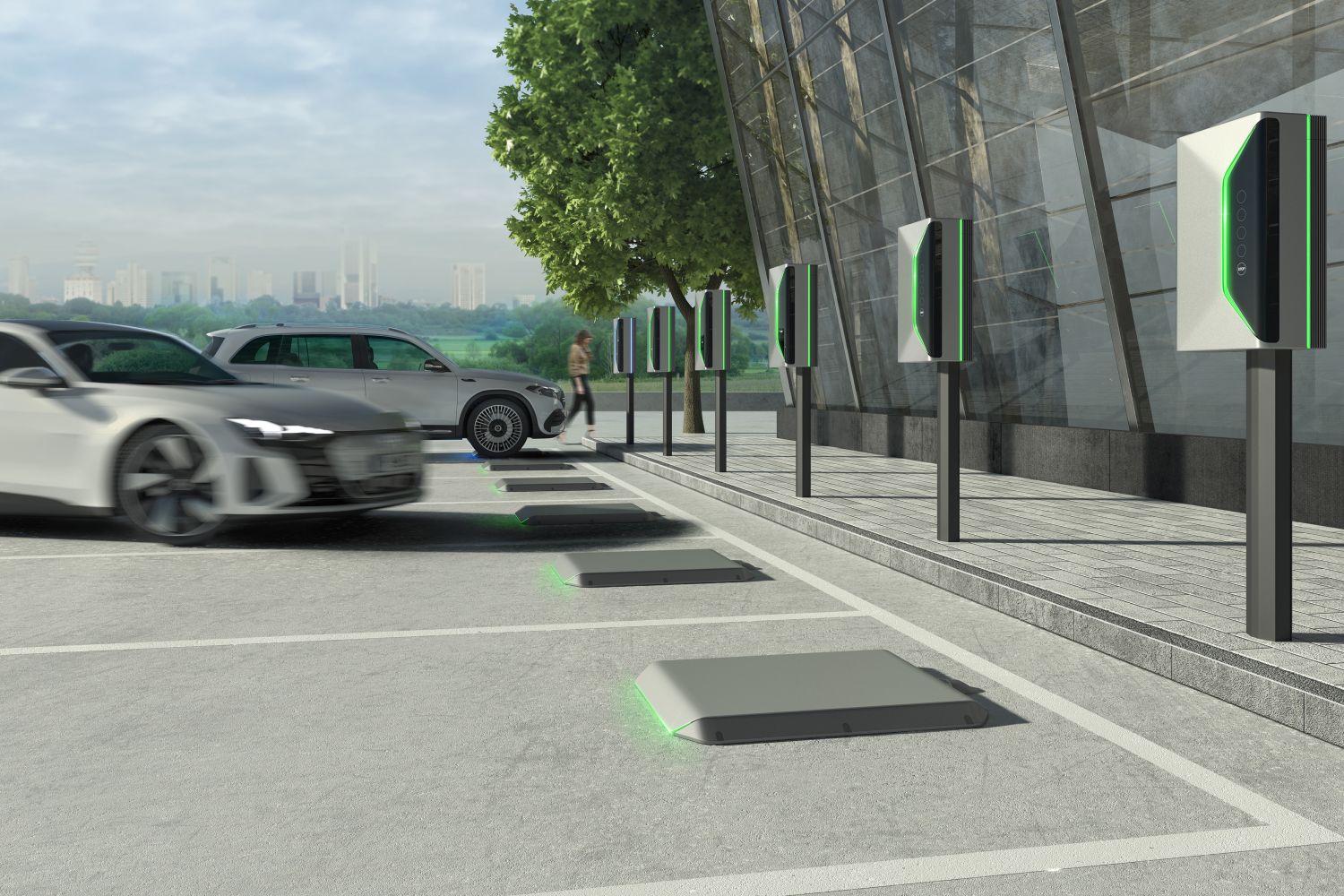
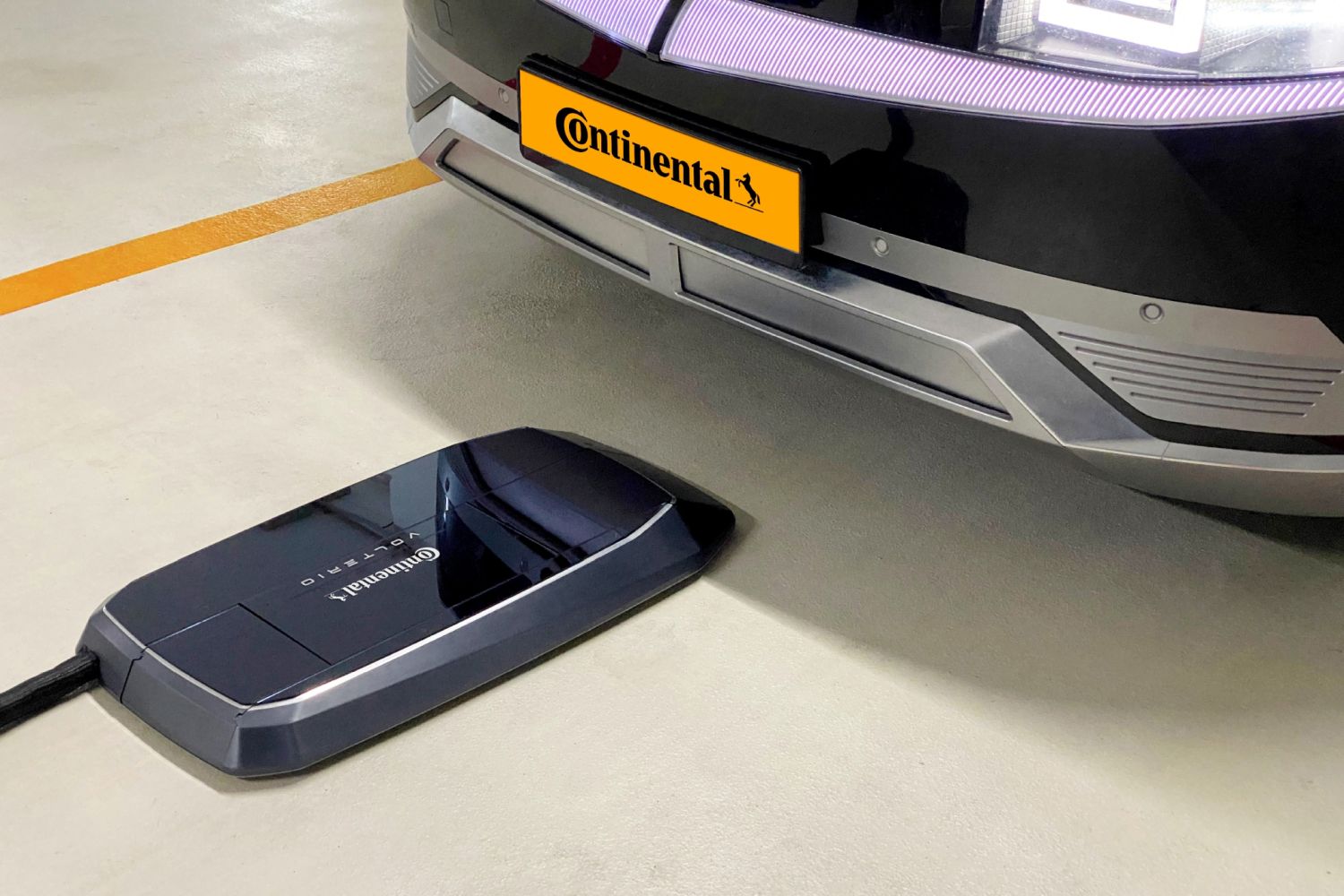
Inductive charging systems in public transport
And what about inductive charging technologies in practice? In local public transport, such systems have already undergone their first severe trials. Braunschweiger Verkehrs-GmbH, for example, has been charging the batteries of its electric buses on the twelve-kilometer ring line 419 at two specially installed stops using 200 kW inductive fast charging since 2015.
As far as the passenger car segment is concerned, wireless charging is still in its infancy, even from an international point of view. “The current state of charging technology in this segment is described by the SAE J2954 standard, presented by SAE International in October 2020, which refers to wireless charging of electric vehicles with up to 11 kW,” knows DEKRA expert Andreas Richter. One of the first applications of this technology is the WiTricity company from Watertown near Boston. The US company offers inductive 11 kW charging stations for parking lots designed to charge just as quickly as comparable wired stations. Siemens eMobility plans to offer these charging options worldwide under a license from WiTricity. Siemens estimates the market volume for wireless charging of e-cars in North America and Europe at two billion dollars by 2028.
The taxi industry could benefit
The taxi industry could be among the beneficiaries of new developments in inductive charging technology. The validation phase of research project “Taxi Charging Concept for Public Areas” (TALAKO) began in Cologne at the end of May 2022. The project is investigating the potential of inductive charging for electrically powered taxis under the leadership of the Chair of International Automotive Management at the University of Duisburg-Essen. Six charging stations with an area of about one and a half square meters and a charging capacity of 22 kW have been set up on a stop lane in front of Cologne’s central train station. A small electric fleet from manufacturer LECV handles the automotive part, with the vehicles specially converted for the field test. The cab waiting in line is automatically charged on the first charging plate. The cab then moves forward, charging slot by charging slot – at an average waiting period of 45 minutes, the cab could charge electricity for a range of around 75 kilometers.
Smart street charging
However, the ideal solution for inductive charging would be if a vehicle were able to receive the power for more range while driving. This is precisely the principle behind the smart roads that Israeli company Electreon has been developing for around five years. The basic design of these smart roads involves laying out copper coils, which are connected to a power source and transmit power to the vehicle equipped with a receiver, about ten centimeters below the road surface.
So far, Electreon has primarily been focusing this technology on public transport. Here, the Israelis already have excellent references – including in Tel Aviv, as well as in Gotland, Sweden, and Detroit, USA, each with a 1.6 kilometer test track. The innovative company’s most recent success is the Arena del Futuro in northern Italy. There, Stellantis has been testing inductive charging of electric cars since the beginning of the year on a 1,050-meter circuit built specifically for this purpose. According to reports, the conductor loops under the asphalt transmit up to one megawatt of electrical power.
A Fiat 500e and an electric city bus from Iveco are being used as test vehicles. Initial data shows that the Fiat can drive at highway speeds without using up the energy stored in its battery. So where do such tests lead? It is quite possible that in the future, highways will be equipped with inductive technology on special sections. Trucks, buses, and cars could then cover hundreds of kilometers without having to make a single charging stop
